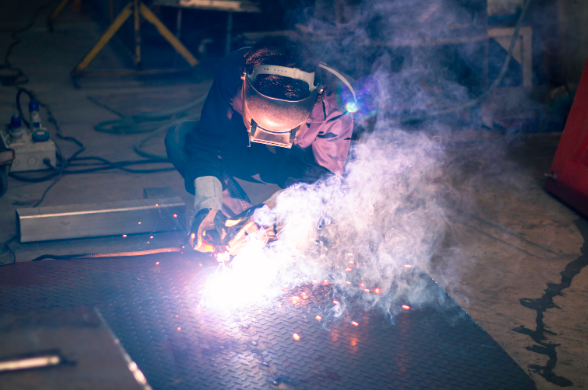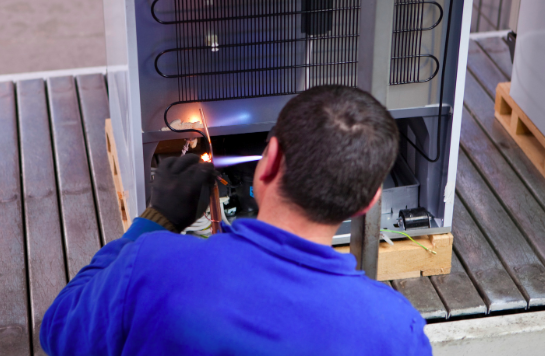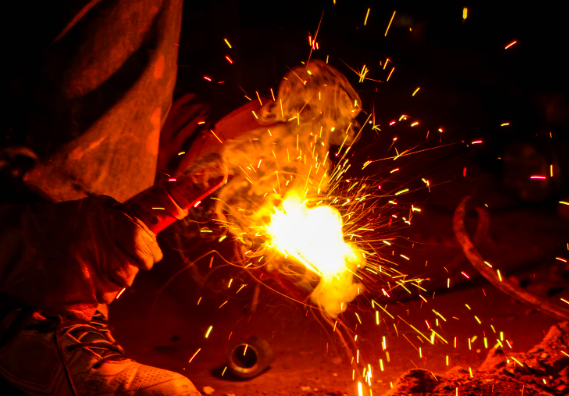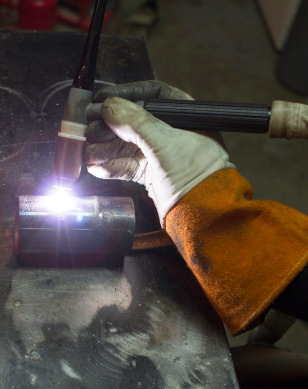Last Updated on November 25, 2022 by mdmtool
There are many ways to combine two pieces of metal, and two of the most common methods are Brazing and welding. While both methods can be effective in certain situations, there are also some key differences between the two
What Is Welding?

Welding is a process that involves using heat and pressure to fuse two pieces of metal. This can be done with an electrical arc or by using a flame. Welding is often used for projects that require a solid joint, such as when building a car or truck frame.
What Is Brazing?

Brazing, on the other hand, is a process that uses a filler metal to join two pieces of metal together. The filler metal has a lower melting point than the base metals, so it can be melted and drawn into the joint without welding them together. Brazing is often used for projects where a strong joint is not required, such as when joining copper pipes.
What Is TIG Welding?

TIG welding is arc welding that uses a tungsten electrode to produce the weld. The tungsten electrode is non-consumable and provides a stable arc for welding. TIG welding can be used on all metals, including aluminum, stainless steel, and magnesium. TIG welding is also known as Heliarc welding.
Brazing Vs. Welding
Brazing and welding are both methods of joining two pieces of metal together. However, there are some critical differences between the two processes.
- Size of the Assembly: One of the main differences between Brazing and welding is the assembly size that can be joined together. Brazing can join small pieces of metal, while welding is typically used to join larger pieces.
- The shape of the Joint: Another difference between Brazing and welding is the shape of the joint that can be created. Brazing can generate a lap joint, where two pieces of metal are laid over each other, or a butt joint, where the two pieces are placed next. Welding, on the other hand, can only create a butt joint.
- Types of Materials: The materials that can be joined together are also different for Brazing and welding. Brazing can be used to join most metals, including aluminum, brass, bronze, and steel. Welding, on the other hand, is typically only used to join iron and steel.
- Production Volume: Brazing is typically the better choice when considering production volume. This is because Brazing can be done quickly and does not require as much setup as welding.
- Temperature: One of the main differences between welding and Brazing is the temperature at which each process takes place. Welding generally requires much higher temperatures than Brazing to melt the filler metal. This means that welding is often used for materials that can withstand high temperatures, such as steel. On the other hand, Brazing can be performed at lower temperatures and is often used for materials that cannot withstand the high temperatures of welding, such as aluminum.

Pros And Cons Of Brazing
Pros:
- Braze create a solid bond between the two pieces.
- Brazing is often used when welding is not possible or practical, such as when joining dissimilar metals or when joining thin pieces of metal that the high temperatures of welding would damage.
Cons:
- Brazing can be challenging, and the joint can be weak if not done correctly.
- Brazed joints are typically not as strong as welded joints.
Pros and cons Of Welding
Pros:
- Welding is often used when Brazing is not possible, such as when joining thick pieces of metal or when
- It is used to join metal that the lower temperatures of Brazing would damage.
Cons:
- Welding can be hazardous if not done correctly.
- Welding equipment can be costly.
- The heat from welding can cause severe burns, and the fumes can be toxic.
Types Of Welding Rods
- Consumable Electrode Welding Rods: Consumable electrode welding rods are less standard than non-consumable electrode welding rods, but they’re still used in specific circumstances. They’re made of a material that completely melts during the welding process and becomes part of the weld. This welding rod is often used in automated welding processes because it can be fed through the machine more easily.
- Non-consumable Electrode Welding Rods: Non-consumable electrode welding rods are the most common type of welding rod. They’re made of a material that doesn’t melt during the welding process, so they don’t become part of the weld itself. This type of welding rod is often used in manual welding processes because they’re easier to control than consumable electrode welding rods.
Types Of Brazing
- Furnace brazing: This method is used when large quantities of parts need to be brazed or when the pieces are too large to fit into a vacuum furnace. The pieces are placed in a controlled atmosphere, usually a chamber with argon gas. The stove is then brought to temperature, and the brazing alloy is melted and drawn into the joint by capillary action.
- Vacuum brazing: This method is used when sensitive parts need to be brazed or when a very clean braze joint is required. The details are placed in a vacuum furnace, and the atmosphere is typically argon gas.
- Silver Brazing: Silver Brazing is often used for joining copper, brass, and stainless steel. The brazing alloy is typically a silver-copper-zinc alloy with a melting temperature of 890-1100°F (480-600°C).
- Vacuum brazing: This method is used when sensitive parts need to be brazed or when a very clean braze joint is required. The pieces are placed in a vacuum furnace, and the atmosphere is typically argon gas.
- Dip brazing: This method is used when enormous, bulky parts must be brazed. The pieces are dipped into a molten bath of brazing alloy, and the alloy is drawn into the joint by capillary action.
FAQs
Can Welding Rods Be Used For Brazing?
No, you cannot use welding rods for Brazing. The two processes require different metals and temperatures
Why is Brazing better than welding?
Brazing is typically used when joining metals that cannot be welded together. It can also join thin pieces of metal together without warping or distortion.
Is welding joint stronger than a brazing joint?
It depends on the application. A welding joint is typically more potent than a brazing joint, but a brazed joint can be just as strong if done correctly. It also depends on the metals being joined. Brazing is the only option for some metals that cannot be welded together.
Conclusion
The main difference between Brazing and welding is that Brazing is a joining process where two metals are joined together using a third filler metal. In comparison, the weld is a process where two metals are joined together using heat and pressure. In addition, welding can be performed with or without filler material, but Brazing always requires a filler material.





